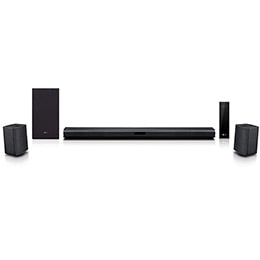Pairing Perfection - Part 2
More about connecting RELs to Balanced Differential Monobocks Than You Ever Wanted To Know
 Balanced Differential monoblocks differ considerably from common single ended mono block amps and these differences can have important consequences when it comes to connecting RELs to your mono blocks. Get it wrong and you could be chasing ground loop-induced hum. Worse, in some cases, amplifiers can load down and run hot so it pays to get this connectivity right from the start.
Balanced Differential monoblocks differ considerably from common single ended mono block amps and these differences can have important consequences when it comes to connecting RELs to your mono blocks. Get it wrong and you could be chasing ground loop-induced hum. Worse, in some cases, amplifiers can load down and run hot so it pays to get this connectivity right from the start.
It is beyond the scope of this brief educational piece to dive into a lengthy engineering description of the various topological differences between differential and single-ended amps. Note: Balanced inputs on your mono blocks does NOT mean you own differential amps. We are concerned about the output design (differential or common single-ended), NOT whether your amp uses XLR input connectors. Call your amp manufacturer and ask them if you have questions about what you own.
A differential monoblock uses the black connector on the amp's speaker terminals to actively pull the inverse or differential of the positive (red) terminal's output. Any tiny variation in gain between your 2 monoblocks can result in hum from your REL.
REL uses true fully grounded designs-many inexpensive subs use double-isolated designs but to produce the safest designs, REL sinks energy to earth. It is the best and safest way to design a high powered sub.
1. Mono block amps require the purchase of mono block RELs.
It's really that simple. Because gain in each channel can produce hum-any offset of even a few millivolts can result in hum, it is simply not worth it to-after spending what amounts to very large money to produce completely separate signal paths straight through to separate power transformers in your amps- then try to sink all this energy through the REL's common ground. Sonically, it's not ideal and hum once induced is very tough to get rid of.
2. Connection:
In all instances, start by simply connecting the red, yellow or both combined to the red + terminal on your am's back panel. Float, that is do NOT connect, the black wire. In some 90% of cases, this will result in a perfect connection that is utterly silent and works perfectly. Why, don't I need a ground wire? Yes, but your system is already providing ground through, for example, the balanced XLR inputs to your amp. Adding another ground can only get one in trouble.
Note: Above, we call out "connecting the red, yellow or both combined to the red + terminal on your am's back panel". Start with both red and yellow, twisted together into a single combined hot wire. Attach this to the re + terminal. If you have no hum and gain is ample but not too high, leave it alone, dial in your system and enjoy. If gain IS too high, shut the amps down, remove the twisted-pair hot wire and disconnect whichever wire is appropriate for the channel. Remove yellow for right channel + and red for left channel +. This will reduce gain by half (-6 db) and, apart from having to increase gain to taste once you reconnect, all's well.
3. Grounding without Connecting to the Black Speaker Terminal:
In a few instances, the system may hum without the ground (black) wire of the REL high level connection connected. One trick we use is to connect a .1 cable (RCA-RCA interconnect) to the .1/LFE input on the back of the REL. If the system is a 2-channel only system, turn the input gain of the REL's .1 all the way down so no signal can come through the REL. By doing this, you will have created an audio ground circuit that often removes hum.
If a pure 2-channel system, connect the other end of the LFE cable to any unused input on your preamp. On most preamps, all the grounds are connected in a common bus and so, should you choose to use "Tuner" or "Line 4" this will serve the same purpose of completing an audio ground circuit.
It is important to stress again, never connect the REL's black wire to the black speaker terminal on your differential balanced amp-this is NOT ground but instead is the invert of the amp's positive and voltage is present. Damage can occur if you put voltage to ground.
4. Many-but not all- balanced differential amps use chassis ground.
Should all else fail, trying tapping the bare wire of the black lead to various chassis bolts. Not all will form a ground path because of conditions such as anodizing preventing a good connection. Often, the one closest to the IEC a/c mains input will be where the factory connects to ground themselves so this is the best place to start.
Go slowly, take your time and be precise. Do not connect to the black terminal because it is NOT ground on a balanced amp and enjoy the results.











